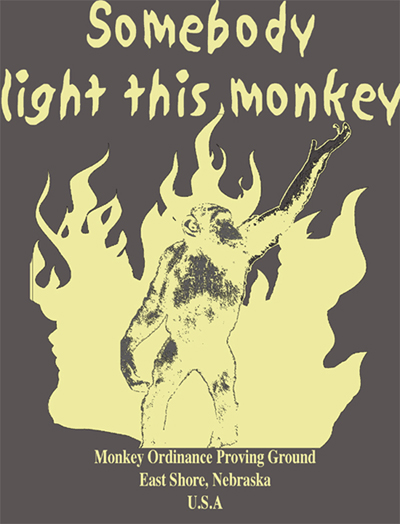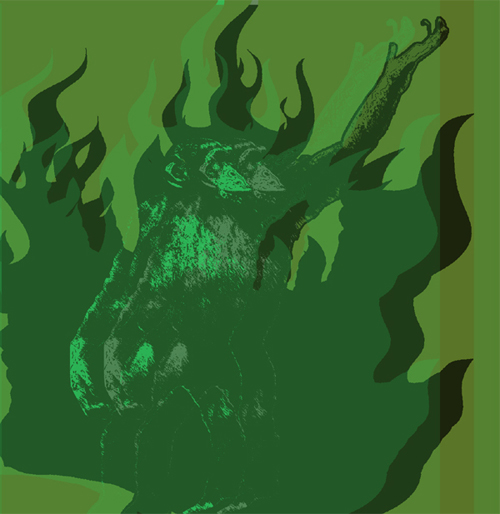| What
Might Have Been

There
are many things in this world we take for granted. All too
often we view the world as being unchangeable; "Just
the way it is". Take, for instance, the Military Industrial
Complex, you know that it will defend you while you sleep,
drop bombs on the enemies, and breathe during your phone
conversations. What nobody realizes is that behind the scenes,
there are minds toiling endlessly to think up the next great
idea in anti-gravity propulsion, aeronautics and SBD olfactoric
weaponry. More then likely, any idea you have had for a
weapon has been thoroughly tested and documented by the
army.
Scientist, Julius Robert Oppenheimer, speculated in a 1951
report* that any chimp over the age of 3 could have their
bloods infused with a viscous mix of aluminum soap and gasoline.
These chimps could then be released into enemy territory
and take nest, awaiting instructions from a two-radio earpiece.
At the best strategic time the chimps would be instructed
to flick on a lighter. The tiny spark would be enough to
ignite the chimp into a fiery napalm explosion. A well-positioned
infused alpha chimp could decimate an area the size of a
football field.
After extensive research, the monkeys seemed to be just
what the MIC would be looking for. The National Monkey Ordnance
research facility was constructed in the quiet port town
of East Shore, Nebraska. It was here that Oppenheimer spent
2 years testing monkey bombs with various degrees of success.
The project was cancelled in 1957 due to public outcry when
John Muir lead one of the first public animal rights campaign
demanding an explanation for all the monkey bits seen flying
through the air around the facility.
While we'll never know what kind of weapons monkeys could
have become, it is a good example of one of the many failed
ideas the government attempted in their search for the "next
big thing".
* - "Old World Monkeys: Mobile
Napalm Delivery" 1951

|